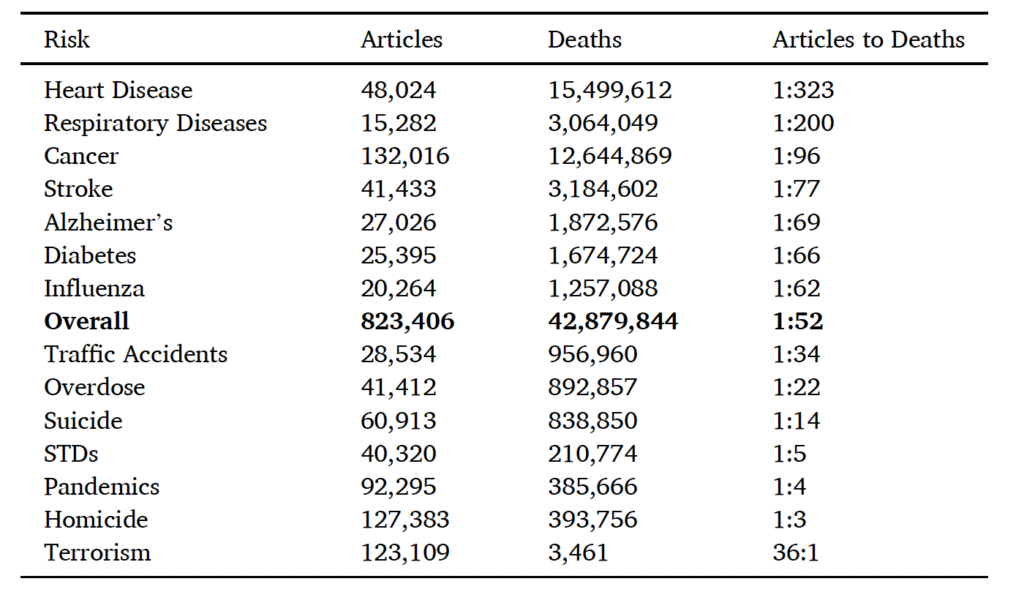
Silent illnesses, or chronic diseases, contribute to 70% of deaths in the US annually and six in ten Americans suffer from at least one chronic condition. Despite this, coverage of this public health crisis is disproportionately overshadowed by sensational risks, including terrorism, homicide, and traffic accidents- incidents that are far more likely to grab readers’ attention.
Calvin Isch, an Annenberg PhD student and member of the Computational Social Science Lab(CSSLab), further explored this bias and imbalance in media coverage in his latest research. In his new paper, Media bias in portrayals of mortality risks: Comparison of newspaper coverage to death rates, Isch found that the mainstream media tends to amplify sensational risks while underrepresenting chronic risks, highlighting a disparity between risks covered by the media and the mortality risks that threaten Americans the most.
Using natural language processing techniques, Isch collected monthly data on 14 different mortality risks using keyword searches on 823,406 major US news outlet articles that were published between 1999 to 2020. The results are shown in this figure drawn from Isch’s paper:

Heart disease, the leading cause of death in the US (accounts for 36% of overall deaths), receives one article per 323 deaths; in contrast, terrorism which accounts for 0.00008% of overall deaths, has 36 articles written about it per death, highlighting that deadlier risks receive less coverage compared to their sensational counterparts; overall there is a weak connection between mortality rates and media coverage.
In addition to identifying mortality risks, Isch’s analysis also looked for any mention of health interventions as well as article tone to determine if bias manifested in other ways in articles. It was found that any mitigation strategies discussed fell under three main categories: policy, behavioral, and technological. Articles on chronic diseases usually emphasized behavioral and technological solutions, while those on sensational risks focused more on collective policy solutions, as shown in another visual from Isch’s paper:

From the list on the right side of the figure, terrorism is the most policy-focused risk and in contrast coverage of diabetes is the least likely to focus on policy, instead emphasizing technological or behavioral solutions. In terms of tone, sensational risk coverage was visibly more negative compared to coverage on chronic disease which was more neutral. This kind of framing can be misleading by implying that sensational risks should be prioritized more and require more large-scale solutions compared to chronic diseases.
Looking at news articles from 1999-2020 revealed that chronic illnesses are underrepresented in the media with sensational risks receiving more media attention despite having fewer deaths associated with it. Studying these trends is significant because of the potential for the media to influence public-health policy. If certain risk factors are emphasized disproportionately to their impact on society, then discussions on policy solutions may over-fixate on them while neglecting others. This highlights the need for a shift in prioritization of public health policies and how mortality risks are presented in the media.
And as for audiences, prolonged engagement with this coverage influences how much importance they place on certain mortality risks. And further exploring the media’s impact on perceptions will help researchers better understand how these perceptions shape public attitudes and policy-making.
Media bias in portrayals of mortality risks: Comparison of newspaper coverage to death rates was published in Social Science & Medicine.
AUTHORS
DELPHINE GARDINER

–
Communications Specialist
